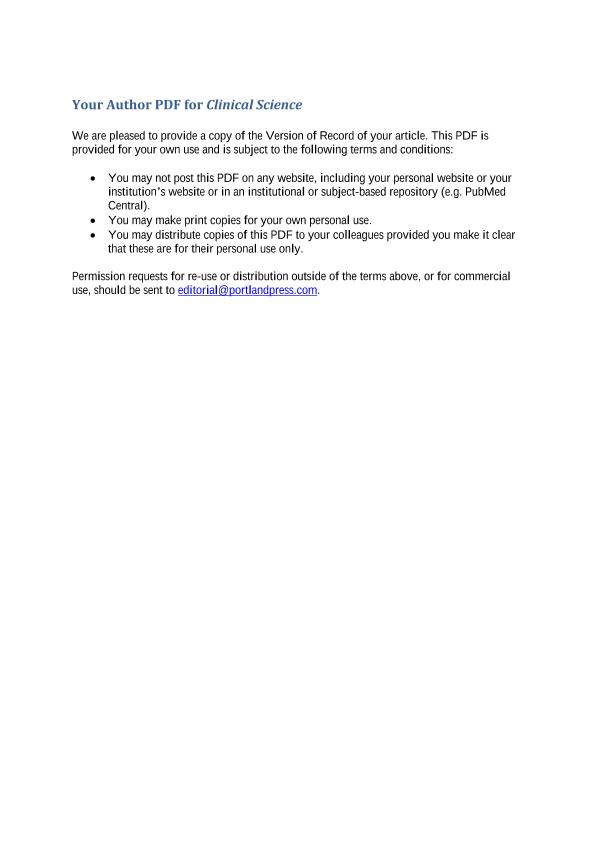Mostrar el registro sencillo del ítem
dc.contributor.author
Prieto, Patricia
dc.contributor.author
Vallejo Cremades, María Teresa
dc.contributor.author
Benito, Gemma
dc.contributor.author
González Peramato, Pilar
dc.contributor.author
Frances, Daniel Eleazar Antonio

dc.contributor.author
Agra, Noelia
dc.contributor.author
Terrón, Verónica
dc.contributor.author
Gónzalez Ramos, Silvia
dc.contributor.author
Delgado, Carmen
dc.contributor.author
Ruiz Gayo, Mariano
dc.contributor.author
Pacheco, Ivette
dc.contributor.author
Velasco Martín, Juan P.
dc.contributor.author
Regadera, Javier
dc.contributor.author
Martín Sanz, Paloma
dc.contributor.author
López Collazo, Eduardo
dc.contributor.author
Boscá, Lisardo
dc.contributor.author
Fernández Velasco, María
dc.date.available
2016-06-09T16:10:26Z
dc.date.issued
2014-12
dc.identifier.citation
Prieto, Patricia; Vallejo Cremades, María Teresa; Benito, Gemma; González Peramato, Pilar; Frances, Daniel Eleazar Antonio; et al.; NOD1 receptor is up-regulated in diabetic human and murine myocardium; Portland Press; Clinical Science; 127; 12; 12-2014; 665-677
dc.identifier.issn
0143-5221
dc.identifier.uri
http://hdl.handle.net/11336/6122
dc.description.abstract
Type 2 diabetes has a complex pathology that involves a chronic inflammatory state. Emerging evidence suggests a link between the innate immune system receptor NOD1 (nucleotide-binding and oligomerization domain 1) and the pathogenesis of diabetes, in monocytes and hepatic and adipose tissues. The aim of the present study was to assess the role of NOD1 in the progression of diabetic cardiomyopathy. We have measured NOD1 protein in cardiac tissue from Type 2 diabetic (db) mice. Heart and isolated cardiomyocytes from db mice revealed a significant increase in NOD1, together with an up-regulation of nuclear factor κB (NF-κB) and increased apoptosis. Heart tissue also exhibited an enhanced expression of pro-inflammatory cytokines. Selective NOD1 activation with C12-γ-D-glutamyl-m-diaminopimelic acid (iEDAP) resulted in an increased NF-κB activation and apoptosis, demonstrating the involvement of NOD1 both in wild-type and db mice. Moreover, HL-1 cardiomyocytes exposed to elevated concentrations of glucose plus palmitate displayed an enhanced NF-κB activity and apoptotic profile, which was prevented by silencing of NOD1 expression. To address this issue in human pathology, NOD1 expression was evaluated in myocardium obtained from patients with Type 2 diabetes (T2DMH) and from normoglycaemic individuals without cardiovascular histories (NH). We have found that NOD1 was expressed in both NH and T2DMH; however, NOD1 expression was significantly pronounced in T2DMH. Furthermore, both the pro-inflammatory cytokine tumour necrosis factor α (TNF-α) and the apoptosis mediator caspase-3 were up-regulated in T2DMH samples. Taken together, our results define an active role for NOD1 in the heightened inflammatory environment associated with both experimental and human diabetic cardiac disease.
dc.format
application/pdf
dc.language.iso
eng
dc.publisher
Portland Press

dc.rights
info:eu-repo/semantics/openAccess
dc.rights.uri
https://creativecommons.org/licenses/by-nc-sa/2.5/ar/
dc.subject
Apoptosis
dc.subject
Cardiomyocyte
dc.subject
Inflammation
dc.subject
Nucleotide-Binding And Oligomerization Domain 1 (Nod1)
dc.subject
Type 2 Diabetes
dc.subject.classification
Otras Ciencias de la Salud

dc.subject.classification
Ciencias de la Salud

dc.subject.classification
CIENCIAS MÉDICAS Y DE LA SALUD

dc.title
NOD1 receptor is up-regulated in diabetic human and murine myocardium
dc.type
info:eu-repo/semantics/article
dc.type
info:ar-repo/semantics/artículo
dc.type
info:eu-repo/semantics/publishedVersion
dc.date.updated
2016-06-01T13:36:05Z
dc.journal.volume
127
dc.journal.number
12
dc.journal.pagination
665-677
dc.journal.pais
Reino Unido

dc.journal.ciudad
Londres
dc.description.fil
Fil: Prieto, Patricia. Consejo Superior de Investigaciones Científicas. Instituto de Investigaciones Biomedicas Alberto Sols; España
dc.description.fil
Fil: Vallejo Cremades, María Teresa. Instituto de Investigacion Hospital Universitario La Paz; España
dc.description.fil
Fil: Benito, Gemma. Instituto de Investigacion Hospital Universitario La Paz; España
dc.description.fil
Fil: González Peramato, Pilar. Instituto de Investigacion Hospital Universitario La Paz; España
dc.description.fil
Fil: Frances, Daniel Eleazar Antonio. Consejo Superior de Investigaciones Científicas. Instituto de Investigaciones Biomedicas Alberto Sols; España. Consejo Nacional de Investigaciones Científicas y Técnicas. Centro Científico Tecnológico Rosario. Instituto de Fisiología Experimental (i); Argentina
dc.description.fil
Fil: Agra, Noelia. Consejo Superior de Investigaciones Científicas. Instituto de Investigaciones Biomedicas Alberto Sols; España
dc.description.fil
Fil: Terrón, Verónica. Consejo Superior de Investigaciones Científicas. Instituto de Investigaciones Biomedicas Alberto Sols; España
dc.description.fil
Fil: Gónzalez Ramos, Silvia. Consejo Superior de Investigaciones Científicas. Instituto de Investigaciones Biomedicas Alberto Sols; España
dc.description.fil
Fil: Delgado, Carmen. Universidad Complutense de Madrid; España
dc.description.fil
Fil: Ruiz Gayo, Mariano . Universidad CEU San Pablo; España
dc.description.fil
Fil: Pacheco, Ivette. Hospital Militar de Managua; Nicaragua
dc.description.fil
Fil: Velasco Martín, Juan P.. Universidad Autónoma de Madrid; España
dc.description.fil
Fil: Regadera, Javier. Instituto de Investigacion Hospital Universitario La Paz; España
dc.description.fil
Fil: Martín Sanz, Paloma. Consejo Superior de Investigaciones Científicas. Instituto de Investigaciones Biomedicas Alberto Sols; España
dc.description.fil
Fil: López Collazo, Eduardo. Instituto de Investigacion Hospital Universitario La Paz; España
dc.description.fil
Fil: Boscá, Lisardo. Consejo Superior de Investigaciones Científicas. Instituto de Investigaciones Biomedicas Alberto Sols; España
dc.description.fil
Fil: Fernández Velasco, María. Instituto de Investigacion Hospital Universitario La Paz; España
dc.journal.title
Clinical Science

dc.relation.alternativeid
info:eu-repo/semantics/altIdentifier/url/http://www.clinsci.org/content/127/12/665.long
dc.relation.alternativeid
info:eu-repo/semantics/altIdentifier/doi/http://dx.doi.org/10.1042/CS20140180
dc.relation.alternativeid
info:eu-repo/semantics/altIdentifier/doi/10.1042/CS20140180
Archivos asociados
